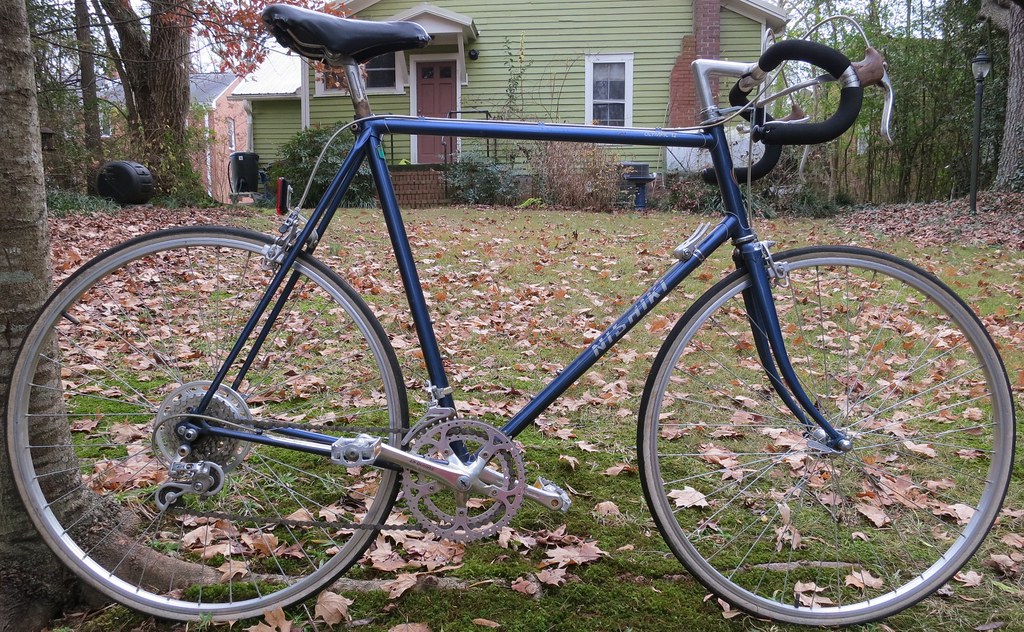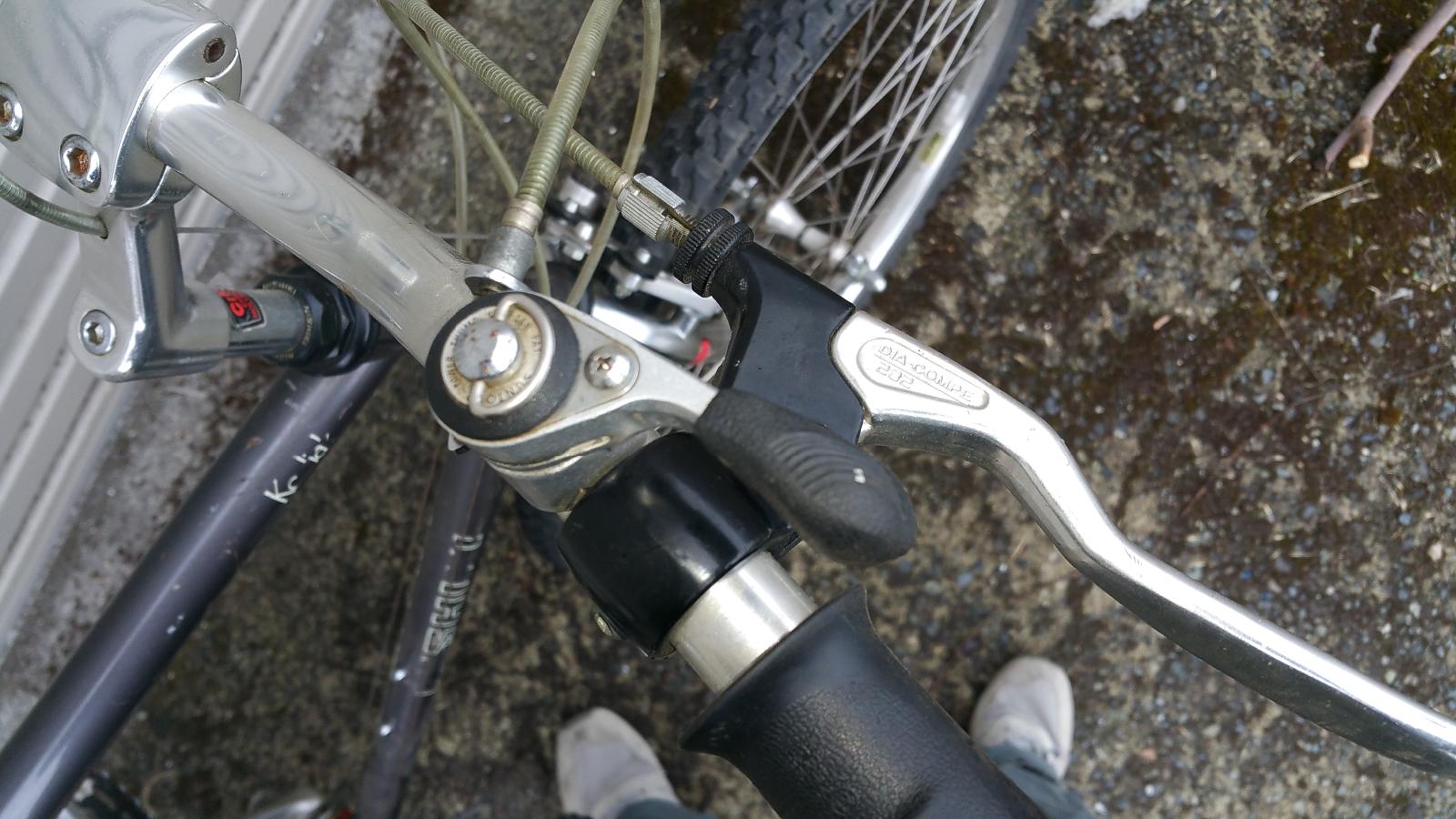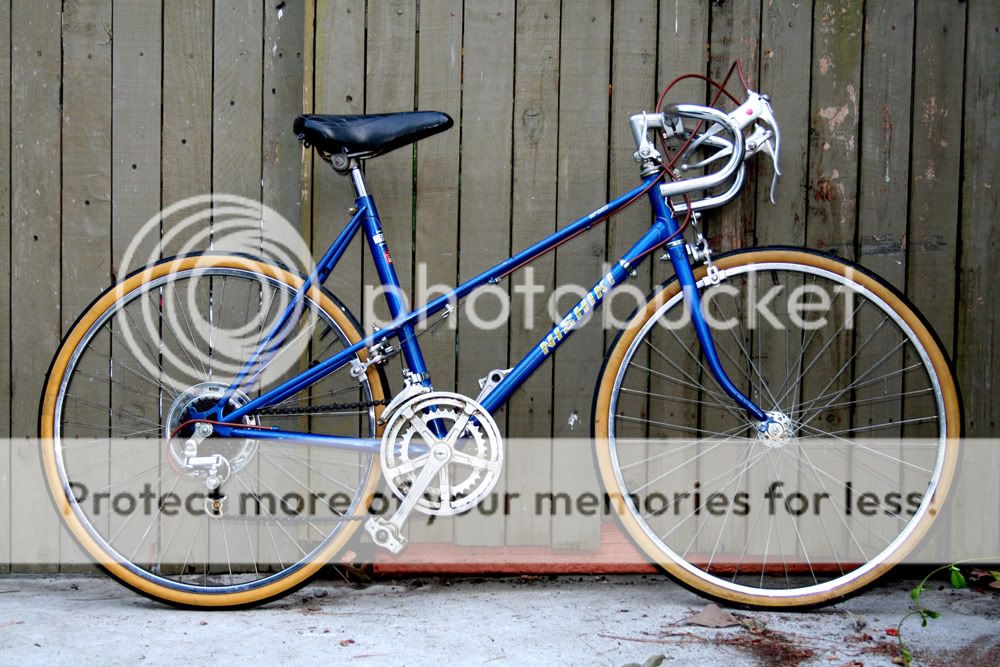Nishiki was created by West Coast Cycle, founded by Leo Cohen Sr. and RosaBelle Cohen who had previously been partners in Wheel Goods Corporation in Minneapolis. They later moved to Los Angeles in 1946 to purchase an existing retail bicycle store, Atlas Cycle, renaming it Playrite Bicycle Supply Co.. The Cohens subsequently founded a bicycle, parts and accessory distribution company in the late 1950s, naming it West Coast Cycle Supply Company. They operated the company — widely known as West Coast Cycle (or WCC) — with their daughter Louise and sons Leo Jr. and Howie (Howard Sherwin Cohen). Howie Cohen subsequently took over the business, followed by his brother.
Nishiki Bike Serial Number Location
When Cohen Sr. died in 1963, Howie Cohen traveled to Japan to find new sources for bicycles, especially, a Japanese bicycle factory capable of producing high quality bikes that would be welcomed by U.S. independent bike dealers and the bicycling community. He wanted bicycles that would be able to compete with American and European-built bicycles.
This recall involves Cannondale, Diamondback, Giant, GT, INA International, Nishiki, Schwinn, Scott and Trek brand bicycles with SR Suntour bicycle forks models M3010, M3020, M3030, NEX and XCT. The recalled forks have serial numbers in the top row beginning with 'K' and ending with a number between 141101 and150127. Nov 12, 2006 The KSxxxxx serial number under the BB just about clinches it - you have a Nishiki or American Eagle, built by Kawamura Bicycles (KB) of Japan. Various Shimano stem shifters were used on the. For more information about the boss 'Nishiki Nishiou', please visit page Bosses. Nishiki is a balanced kagune in damage, speed, and defense, making it an example of the bikaku RC-type in Tokyo Ghoul. The kagune is strictly close-range with some stages possessing moves to assist in fighting at such a range. Its general appearance is similar to a serpent's tail The kagune is one of the starting. The next part of the serial number is eight numeric digits. The first four numbers should be a two digit month followed by a two digit year. The last four digits are the serialization digits 0000 to 9999 depending on what number the frame was of the years production. If the frame was made overseas in Taiwan, it gets more complicated. As of 2010, Nishiki-branded bicycles, manufactured by Accell Group were available for sale again in the U.S. At Dick's Sporting Goods. Dick's had obtained licensing rights to the Nishiki Bike brand in the U.S. Currently (2013), Nishiki Europe, an unrelated group of European distributors markets bicycle models in Denmark, Finland, and Sweden.
Howie Cohen Builds The Business
Howie purchased Premium brand Hi-Riser bikes using H. Tano Shokai in the early 1960`s. These bikes were produced by Sakai Bicycle Co (Mr. Katayama, president).
Cohen also created working relationships with many other Japanese bicycle parts manufacturers including, Asahi, Araya, Dia-Compe, Kashima, Kusuki, Kyokuto (KKT), Mikashima (MKS), Mitsuboshi, Taihei, Sanshin, Shimano, Sugino, Takagi, Suntour and others.[1] Cohen travelled to Japan 8-10 times per year while developing his brands (American Eagle, Nishiki, Azuki and CyclePro).

Howie Cohen Moves To Japan
Howie worked closely with Rio Marui, Sammy Shigemura & Ed Yokohama. Marui was an exporter and exported one expensive model of an American Eagle bicycle along with many different Japanese components to WCC. When WCC found it necessary for Howie to move & live in Japan, Marui was extremely helpful in loaning Howie`s family some furniture for the rented house in Kobe. Marui developed and owns the Tioga line of components & parts. Marui opened a USA office under the name Oriental Boeki, located in Glendale, CA; Rio`s son, Shinji, worked in this office with Mark Pippin.
Kawamura Cycles (aka Kawamura Sangyo Co., Ltd.) was the initial (original) maker of American Eagle and Nishiki brand bicycles. Howie met Mr Yukio Kawamura (aka Higesan because of his long standing mustache) in 1964 at which time he visited the factory for the first time.
Howie thought this factory would be able to produce high quality bicycles. The spirit and passion of Higesan and his staff convinced Howie to work closely with this firm. Higesan was a wise gentleman and took Howie under his wing and taught him much about the production of bicycles. Howie stayed in the Kawamura residence for weeks at a time. There were many staff members with whom Howie worked with over the years, a few of which were: Atsu Sawada, Ikutaki-san, Katchan, and others. Katsu Okuno, Higesan`s nephew lived in the Cohen`s home for several months while studying the American bicycle market.
H.Tano to Kawamura
Cohen placed his initial order for 570 bikes with Kawamura, selling them under the American Eagle brand. WCC sold tens of thousands of American Eagle bikes before changing the name — when a customer suggested it was disingenuous to put such an American-sounding name on a Japanese product.
WCC wanted a new, Japanese name that was easy to pronounce, with an none-offensive translation and a name easily pronounced. Cohen held a contest with Kawamura factory workers for Japanese names, choosing Nishiki for WCC’s primary, nationwide line of bikes (after Saga Nishiki and the gold Nishiki thread often woven into wedding kimonos). The name Azuki was chosen for the secondary bicycle line (after the sweetened, red Azuki bean), using the chrysanthemum as the Azuki logo.
A second line allowed WCC to market essentially identical bikes through more than just one dealership in a sales territory. Louisville Cycle & Supply (Louisville, KY) were sub-distributors for both brands in the Southeast, and Pettee Cycle (Denver, CO) were sub-distributors of both brands in Colorado and surrounding states. Kawamura trademarked both names for the Japanese Domestic Market and Europe, WCC trademarked the brands for the USA. Early promotional material for American Eagle and Nishiki lines often carried the tagline ‘KB Bicycles’ or simply ‘KB’ — signifying ‘Kawamura-Built.’ WCC continued also to market the bicycle brands of Mundo, Caloi, Windsor, Zeus, and Mondia.
Howie Cohen served as President of WCC from 1965 until his retirement in 1976. His brother, Leo Jr. along with some outside investors, subsequently took over operations of the business.| (L to R) WCC's Leo Cohen Jr, Bob Hansing, Mr. Ikutaki (chief engineer at Kawamura) and Howie Cohen standing in the Kawamura Bicycle Co display booth at the Japan Cycle Show, c.1972 |
Through the 1980s WCC continued to sell Nishiki bikes produced by Kawamura. International currency fluctuations in the late 1980s made Japanese-manufactured bicycles far more expensive and less competitive in the United States, leading WCC to move Nishiki production to Giant of Taiwan. Leo Cohen and his associates later sold West Coast Cycle to Medalist. Derby International eventually acquired the rights from West Coast Cycle to market bikes under the Nishiki brand in the United States.
After manufacture of Nishiki bikes shifted to Giant, Kawamura continued manufacturing bicycles for the Japanese and European markets (including private label bikes for Takara, Schwinn, and others), to be subsequently acquired by the sporting goods company Mizuno.
Howie Cohen later founded the company Everything Bicycles, working with Kuwahara to build and import BMX bikes carrying the Kuwahara brand name. He developed the first major BMX distributorship and ultimately supplied Kuwahara bicycles for the 1982 movie E.T. while securing the right to market the “ET Bicycle.” To make the Kuwahara brand name a household word, Cohen ran a promotion giving free stickers to children who called a toll-free phone number, then correctly pronounce the brand name. In 1989, Cohen sold the Kuwahara name back to the Japanese parent company. In 1992, Cohen returned to the bicycle industry to work with and assist the Gary Fisher bike brand. Eighteen months later Howie brokered the acquisition of Gary Fisher Mountain Bikes by Trek Bicycle Corporation.
Cohen later worked as a consultant in the bicycle industry for several companies, including Rotor Componentes of Spain, and subsequently retired from Lomita, California to Colorado where he and his wife, Kay (Kay Piercy Guithues Cohen) catalogued his collection of bicycling memorabilia and maintained his website, HowieBikeMan.com.
When Howie Cohen died on July 11, 2013, Bicycle Retailer said he was “a hugely influential figure in developing the U.S. BMX market and arguably the first person to bring high-quality Asian-made bikes to America.”
Derby
Nishiki Serial Number Location Engine
From 1989 through 2001, Derby International marketed bikes in the United States under the Nishiki name, as well as Univega and Raleigh brand names. Some of the all terrain bikes and mountain bike models were designed in partnership with famed mountain bike designer and Mountain Bike Hall of Fame member R. Cunningham. These Nishiki models, though manufactured outside Japan (e.g., in Taiwan, by Giant Bicycles and possibly in Italy by Colnago, Olmo or Viner) often carried the name Nashiki and some of the same model names as had been used on the Kuwahara-built bicycles.
In order to sell “American” Nishikis outside USA Derby Cycles were forced to use the brand name Cyclpro, formerly used for mail order and department store bicycles in the home market. Sometimes Cyclpro bicycles had “Nishiki” engraved in the frame which caused some confusion. After a period as a department store brand, Derby ceased selling Nishiki in the USA in 2001.
Nishiki Bicycle Serial Number
Nishiki Beyond 2010

As of 2010, Nishiki-branded bicycles, manufactured by Accell Group were available for sale again in the U.S. at Dick’s Sporting Goods. Dick’s had obtained licensing rights to the Nishiki Bike brand in the U.S.

Serial Number
Currently (2013), Nishiki Europe, an unrelated group of European distributors markets bicycle models in Denmark, Finland, and Sweden. Nishiki bikes had previously been also marketed in Norway, Belgium, Germany, the Netherlands, Luxembourg, and Estonia.